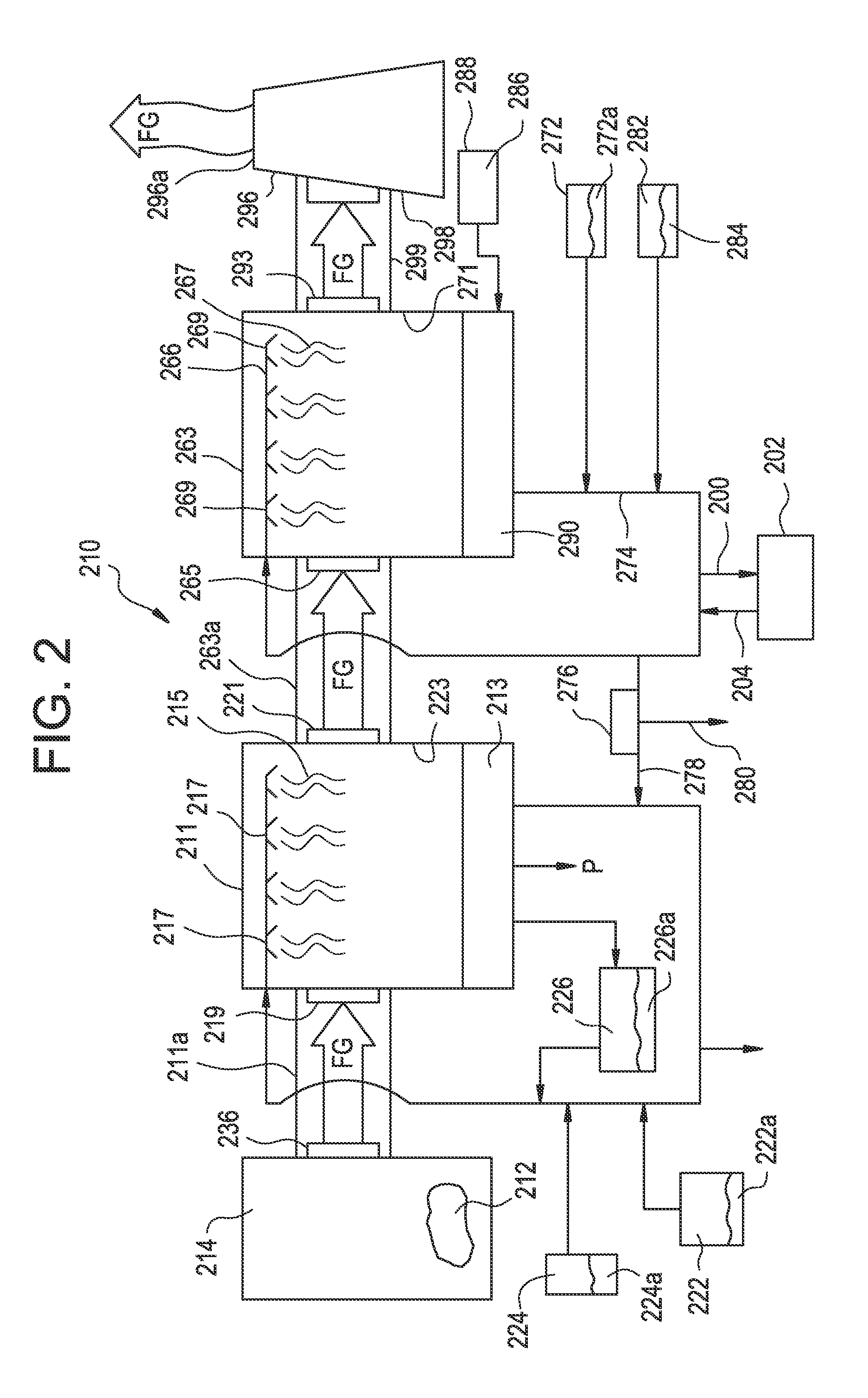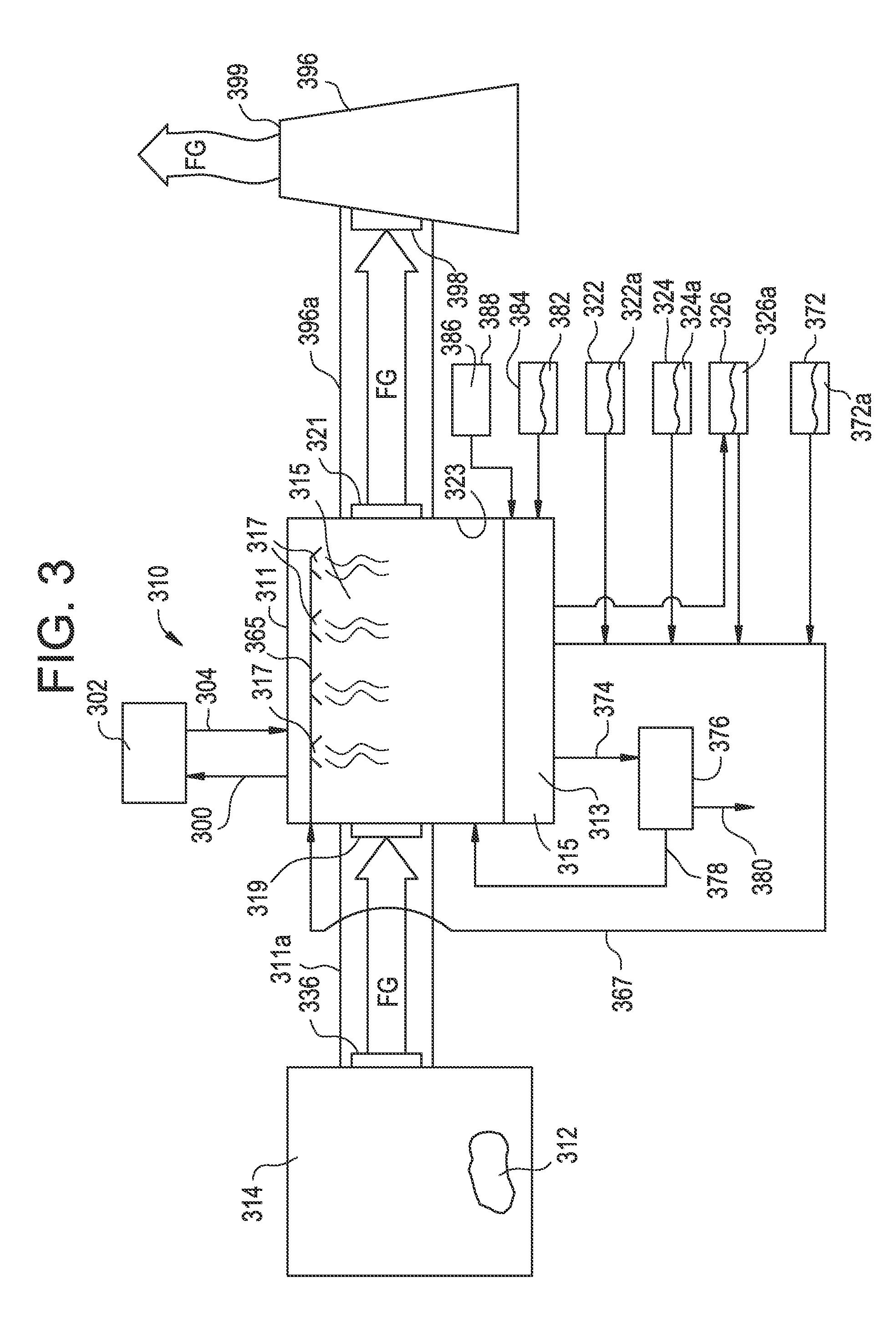Oxidation system and method for cleaning waste combustion flue gas
a technology of oxidation system and flue gas, which is applied in the direction of separation processes, machines/engines, sulfur compounds, etc., can solve the problems of limited cost effectiveness of mechanical and/or chemical processes required to achieve the mandated reduction levels, low to moderate removal efficiency, and fouling of heat transfer surfaces, etc., to achieve efficient and cost effective capture
- Summary
- Abstract
- Description
- Claims
- Application Information
AI Technical Summary
Benefits of technology
Problems solved by technology
Method used
Image
Examples
Embodiment Construction
[0018]The combustion of waste produces flue gas comprising SO2. SO2 from the flue gas is poorly absorbed into solution at a pH below 5 due to the dissociation equilibrium as described with regard to Reactions 1 through 3 above. At higher pH, SO2 is dissociated and forms bisulphite, which contributes to a much better absorption. If a bisulphite solution is acidified, the absorbed SO2 desorbs and again escapes the solution. However, if the sulphite in solution, whether dissociated or not, is oxidized to sulphate, i.e., SO42−, it will be dissociated also at low pH since the corresponding sulphuric acid, unlike suphurous acid, is a very strong acid. Hence, the sulphate is “permanently” absorbed and removed from the system sulphite equilibrium.
[0019]With the above in mind, the subject waste combustion flue gas treatment system 10 is described. As best illustrated in FIG. 1, in the subject waste combustion flue gas treatment system 10, waste 12 is combusted in boiler 14. Flue gas “FG” pro...
PUM
| Property | Measurement | Unit |
|---|---|---|
| Molar density | aaaaa | aaaaa |
Abstract
Description
Claims
Application Information
 Login to View More
Login to View More - R&D
- Intellectual Property
- Life Sciences
- Materials
- Tech Scout
- Unparalleled Data Quality
- Higher Quality Content
- 60% Fewer Hallucinations
Browse by: Latest US Patents, China's latest patents, Technical Efficacy Thesaurus, Application Domain, Technology Topic, Popular Technical Reports.
© 2025 PatSnap. All rights reserved.Legal|Privacy policy|Modern Slavery Act Transparency Statement|Sitemap|About US| Contact US: help@patsnap.com



